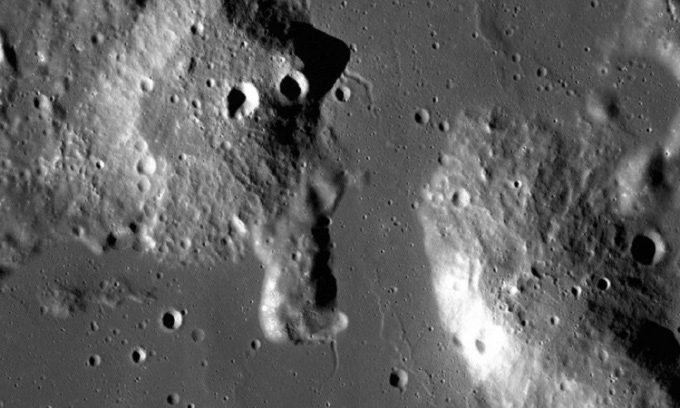NASA will control a probe to explore a dome formed from magma on the Moon, which has a structure distinctly different from the surrounding area, according to an announcement on June 2.

Gruithuisen Dome on the Moon. (Photo: NASA)
NASA’s Artemis mission has a key objective of sending astronauts to the Moon to establish the first long-term settlement and understand the necessary conditions for transporting humans to Mars. Additionally, the program plans various scientific activities, including launching two instruments, Lunar Vulkan Imaging and Spectroscopy Explorer (Lunar-VISE) and Lunar Explorer Instrument for space biology Applications (LEIA), to the Moon to explore Gruithuisen Dome, a geological feature that has puzzled researchers for many years. This duo of instruments will provide crucial data for NASA scientists.
According to Joel Kearns, Deputy Director of Exploration in NASA’s Science Mission Directorate, the first study will investigate the geological processes of celestial bodies in their early stages preserved on the Moon by examining a rare form of volcano. The second study will explore the effects of low gravity on the Moon and the radiation environment on yeast, thereby determining DNA damage and repair mechanisms.
Lunar-VISE will explore the summit of Gruithuisen Dome over a period of 10 days. Researchers believe that Gruithuisen Dome was formed from a sticky, silica-rich type of magma with a composition similar to granite. Lunar-VISE will investigate how these domes formed without the need for liquid water or plate tectonics. This remains a significant mystery for space scientists.
Observations from the Lunar Reconnaissance Orbiter (LRO) confirm that Gruithuisen Dome is distinct from the surrounding terrain, which is covered by ancient solidified basalt lava flows. What confounds researchers is how silica-containing magma formed on the Moon. On Earth, silica volcanoes typically form under two conditions: the presence of water and plate tectonics. However, these essential conditions do not exist on the Moon.
The LEIA instrument will conduct biological research on the Moon by providing Saccharomyces cerevisiae yeast and studying how it reacts to lunar radiation and gravity. Data collected by this mission will complement information from previous biological studies, helping scientists determine the effects of radiation and gravity on the human body.


















































